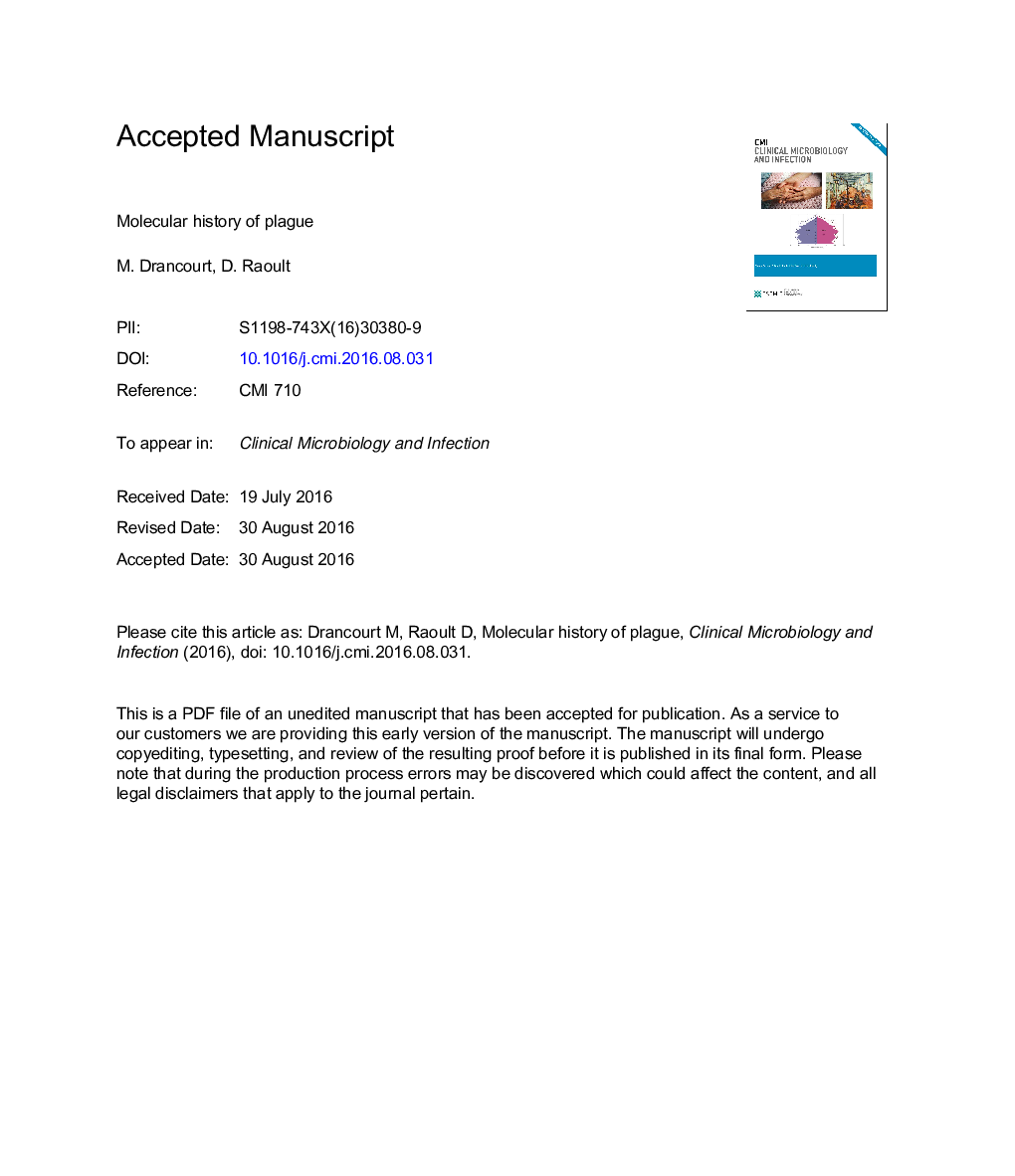| کد مقاله | کد نشریه | سال انتشار | مقاله انگلیسی | نسخه تمام متن |
|---|---|---|---|---|
| 5671867 | 1408072 | 2016 | 26 صفحه PDF | دانلود رایگان |
عنوان انگلیسی مقاله ISI
Molecular history of plague
ترجمه فارسی عنوان
تاریخچه موروثی طاعون
دانلود مقاله + سفارش ترجمه
دانلود مقاله ISI انگلیسی
رایگان برای ایرانیان
کلمات کلیدی
موضوعات مرتبط
علوم زیستی و بیوفناوری
ایمنی شناسی و میکروب شناسی
میکروب شناسی
چکیده انگلیسی
Plague, a deadly zoonose caused by the bacterium Yersinia pestis, has been firmly documented in 39 historical burial sites in Eurasia that date from the Bronze Age to two historical pandemics spanning the 6th to 18th centuries. Palaeomicrobiologic data, including gene and spacer sequences, whole genome sequences and protein data, confirmed that two historical pandemics swept over Europe from probable Asian sources and possible two-way-ticket journeys back from Europe to Asia. These investigations made it possible to address questions regarding the potential sources and routes of transmission by completing the standard rodent and rodent-flea transmission scheme. This suggested that plague was transmissible by human ectoparasites such as lice, and that Y. pestis was able to persist for months in the soil, which is a source of reinfection for burrowing mammals. The analyses of seven complete genome sequences from the Bronze Age indicated that Y. pestis was probably not an ectoparasite-borne pathogen in these populations. Further analyses of 14 genomes indicated that the Justinian pandemic strains may have formed a clade distinct from the one responsible for the second pandemic, spanning in Y. pestis branch 1, which also comprises the third pandemic strains. Further palaeomicrobiologic studies must tightly connect with historical and anthropologic studies to resolve questions regarding the actual sources of plague in ancient populations, alternative routes of transmission and resistance traits. Answering these questions will broaden our understanding of plague epidemiology so we may better face the actuality of this deadly infection in countries where it remains epidemic.
ناشر
Database: Elsevier - ScienceDirect (ساینس دایرکت)
Journal: Clinical Microbiology and Infection - Volume 22, Issue 11, November 2016, Pages 911-915
Journal: Clinical Microbiology and Infection - Volume 22, Issue 11, November 2016, Pages 911-915
نویسندگان
M. Drancourt, D. Raoult,
